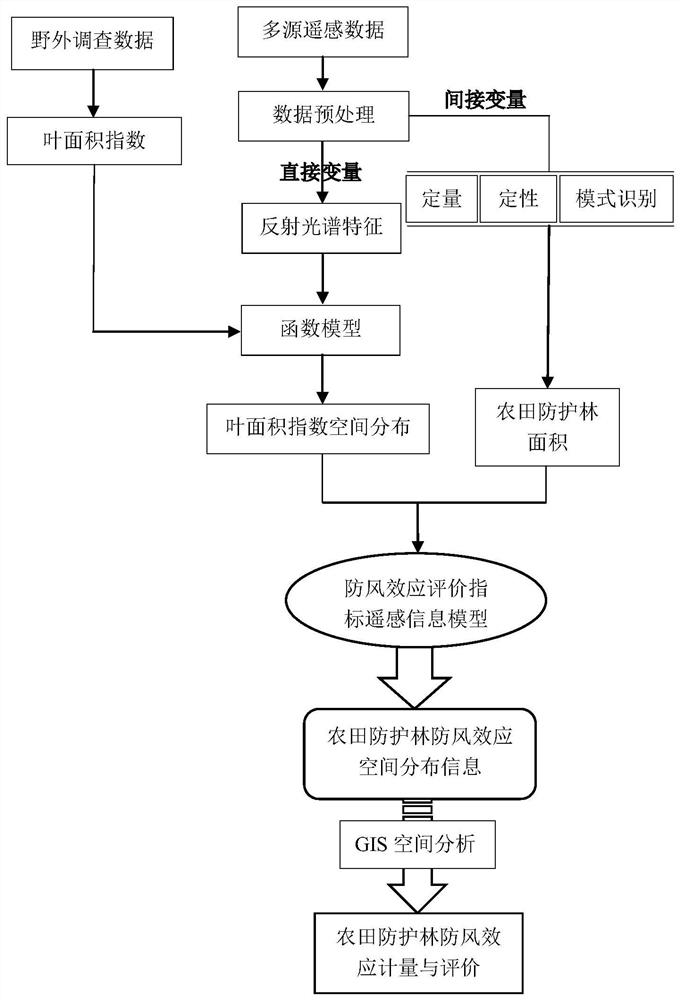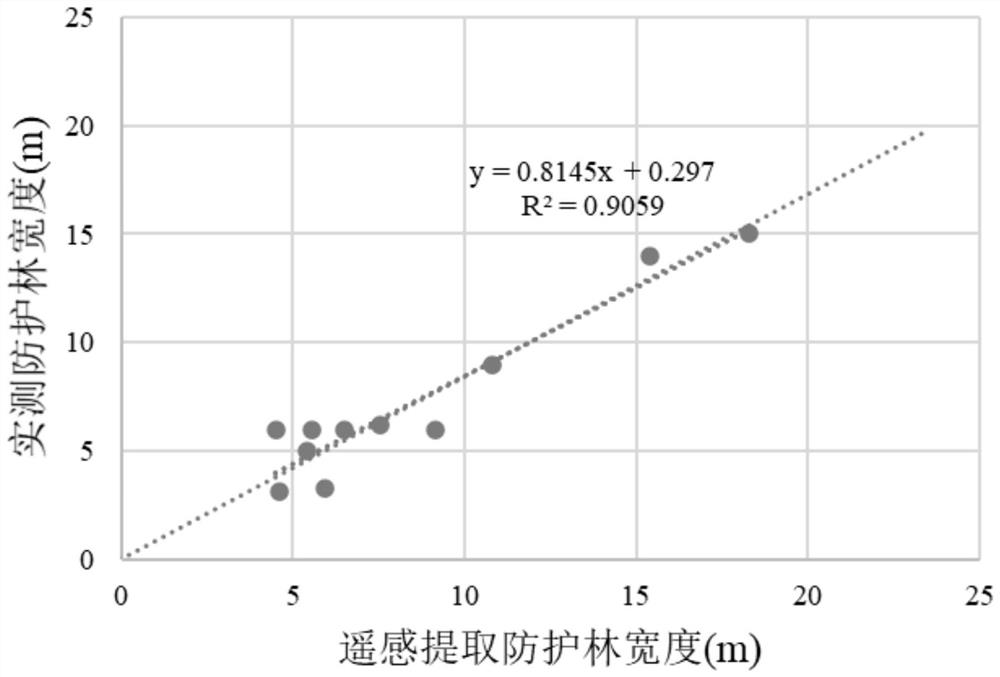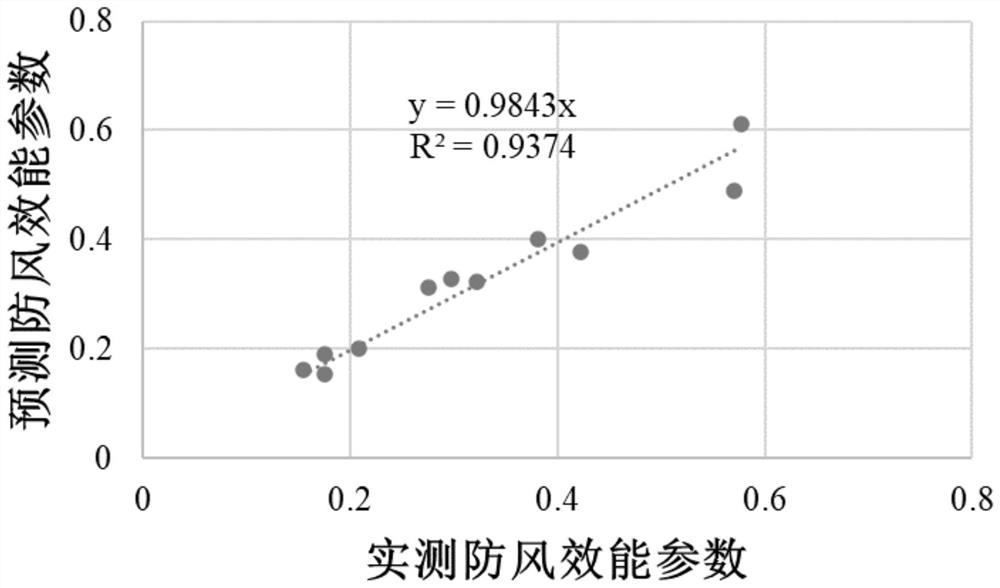A measurement method of windbreak effect of farmland shelterbelt based on spatial information technology
A technology of spatial information technology and farmland shelterbelt, which is applied in the field of measurement of windbreak effect of farmland shelterbelt based on spatial information technology, can solve problems such as poor accuracy and unsuitable evaluation results, and achieve the effect of ensuring accuracy and improving evaluation accuracy
- Summary
- Abstract
- Description
- Claims
- Application Information
AI Technical Summary
Problems solved by technology
Method used
Image
Examples
specific Embodiment approach 1
[0019] Specific implementation mode one: combine figure 1 This embodiment will be described. A method for measuring the windproof effect of farmland shelterbelts based on spatial information technology described in this embodiment, the method is specifically implemented through the following steps:
[0020] Step 1, collecting farmland shelterbelt remote sensing images, performing remote sensing data preprocessing on the collected remote sensing images, and obtaining farmland shelterbelt surface albedo image data;
[0021] Step 2. Use pattern recognition to extract farmland shelterbelt data from the obtained surface reflectance image data, and perform qualitative and quantitative analysis on the extracted farmland shelterbelt data, obtain the structural parameters of farmland shelterbelt, and calculate according to the obtained farmland shelterbelt structure parameters The area of farmland protection forest;
[0022] Step 3, using the reflectance spectrum characteristics of...
specific Embodiment approach 2
[0031] Specific embodiment 2: The difference between this embodiment and specific embodiment 1 is that the remote sensing image of the farmland shelterbelt is collected, and the remote sensing data is preprocessed on the collected remote sensing image. The preprocessing method includes radiation calibration, atmospheric correction and geometric correction. .
specific Embodiment approach 3
[0032] Embodiment 3: This embodiment differs from Embodiment 2 in that: the acquisition of the structural parameters of the farmland shelterbelt includes the length of the farmland shelterbelt and the width of the farmland shelterbelt.
PUM
 Login to View More
Login to View More Abstract
Description
Claims
Application Information
 Login to View More
Login to View More - R&D
- Intellectual Property
- Life Sciences
- Materials
- Tech Scout
- Unparalleled Data Quality
- Higher Quality Content
- 60% Fewer Hallucinations
Browse by: Latest US Patents, China's latest patents, Technical Efficacy Thesaurus, Application Domain, Technology Topic, Popular Technical Reports.
© 2025 PatSnap. All rights reserved.Legal|Privacy policy|Modern Slavery Act Transparency Statement|Sitemap|About US| Contact US: help@patsnap.com



